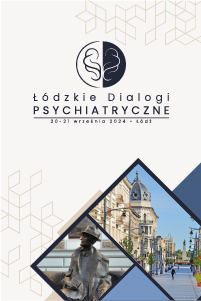Quality of life in institutionalized patients with schizophrenia
Aleksandra Petrovic Kitic, Slobodan Jankovic
 Affiliacja i adres do korespondencji
Affiliacja i adres do korespondencjiAim: Research into quality of life has become very important recently, since quality of life is increasingly used to characterise diseases and estimate the efficiency of therapeutics. The aim of this study was to determine significant factors that are associated with the quality of life of patients with schizophrenia accommodated in social welfare institutions. Material and methods: The study was conducted at the Institution for the Accommodation of Adults “Male Pcelice,” Kragujevac, Serbia. It was designed as a cross-sectional study. The quality of life was measured by using five distinct scales. The data on factors that might be associated with the quality of life were obtained from case records and the patients’ questionnaires. The association of every single factor was evaluated by using comparative analysis and the method of multiple linear regression. Results: Multiple linear regression shows that EuroQoL Five-dimensions – Five-Level scale score was associated with gender (B = −0.059 ± 0.021; p = 0.006) and daily dose (B = −0.051 ± 0.015; p = 0.001); Quality of Life Enjoyment and Satisfaction Questionnaire score was associated with the patient’s level of education (B = 2.873 ± 1.054; р = 0.007); the number of prescribed antipsychotics was associated with the Brief Psychiatric Rating Scale score (B = 3.150 ± 1.111; р = 0.007); the physical domain of the World Health Organization Quality of Life-BREF was associated with the year of disease onset (B = −0.142 ± 0.055; р = 0.011) and the daily dose (B = −2.335 ± 0.787; р = 0.004); the psychological domain of the World Health Organization Quality of Life-BREF was associated with gender (B = −2.686 ± 1.216; р = 0.029); the social relationship domain of the World Health Organization Quality of Life-BREF was associated with the level of education (B = 3.109 ± 1.289; р = 0.017) and the number of prescribed antipsychotics (B = −3.297 ± 1.516; р = 0.031); the environment domain of the World Health Organization Quality of Life-BREF was associated with the number of prescribed antipsychotics (B = −1.420 ± 0.653; р = 0,031). Conclusion: The quality of life of patients with schizophrenia was higher in males with a university degree, when the duration of the disease was shorter, negative symptoms were less pronounced, and with fewer side effects. Efforts to improve the quality of life in patients with schizophrenia accommodated in social welfare institutions should be made that could contribute to the prevention of adverse outcomes.















